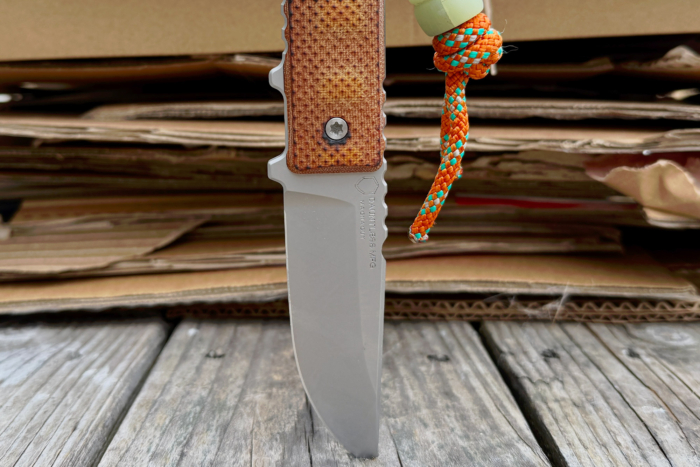CJRB is one of the better budget makers out there. The Mini Feldspar and the Pyrite are both great, but they are clearly the result of heavy penny-pinching (the high-end Pyrite is a different beast entirely).
So what would it look like if CJRB tried to aim at the middle of the market? The answer is the Scoria, a knife that packs in a lot of high-end features for the money. It’s available in a bunch of different handle materials, but the blade G10 version was the first to market.
In short: This is a true mid-priced knife ($70) with features that reach into the high end all for a decent price. But the weak detent leaves something to be desired.
- Steel: AR-RMP9
- Grind: Partial flat grind with an unsharpened swedge
- Lock: Liner lock
- Blade length: 3.48"
- Handle length: 4.53"
- OAL: 8.01"
- Weight: 3.53 oz.
- Price: Starting at $70
- Country of origin: China
Pros
- Exclusive AR RPM9 steel
- Sculpted handle scales
- High value
- High end touches with a blind clip and pivot collar
Cons
- Weak detent
- Scratch-prone coated blade
- Blade longer than 3.5 inches could be illegal in some jurisdictions
CJRB Scoria Review

CJRB Scoria Design












